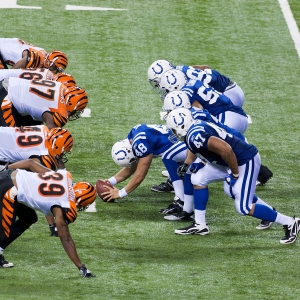The National Football League (NFL) Uniform Rules and Regulations

The NFL's stringent regulations on football uniforms stem from a blend of tradition, the need for uniformity, and the evolution of the sport. Uniform rules in professional football have been a constantly evolving topic, reflecting changes in technology, safety standards, and cultural trends. In the early years of the sport, uniform regulations were far less rigorous, focusing mainly on basic distinctions between teams. As the league grew in popularity and commercial significance, the NFL began to implement more detailed uniform policies. These policies ensure not only a consistent and professional appearance across all teams but also address crucial aspects of player safety and game integrity.
Football uniforms play a vital role in the sport's identity, contributing to team spirit and fan engagement. The NFL's approach to uniform regulations balances the historical significance and team loyalty with modern advancements and commercial considerations. The evolution of these rules is a testament to the league's responsiveness to player safety concerns, technological improvements in gear, and the ever-changing landscape of sports marketing and branding.
Uniform Rules and Regulations
- Standard Uniform Elements: NFL players must wear standard uniform elements, including a helmet, shoulder pads, jersey, pants, socks, and shoes. Each team has its own uniform design and colors.
- Team Colors and Logos: Teams have designated colors and logos, which must be displayed on the uniforms, including helmets with team logos.
- Jersey Numbers: Players are assigned numbers based on their position, with specific ranges for each group (e.g., quarterbacks 1-19).
- Uniform Consistency: All team members must wear uniforms that are consistent in color and design during a game, ensuring a uniform appearance.
- Advertising and Personal Messages: The NFL prohibits personal messages or unauthorized advertising on uniforms. Players can be fined for violations.
- Safety Equipment:
- Helmets: Must be NOCSAE certified. Certain models were banned starting 2019 for safety reasons.
- Mouthguards: Mandatory for all players. This was emphasized following incidents where players, like Odell Beckham Jr., played without them.
- Thigh and Knee Pads: Made mandatory again in 2013 after being relaxed, following injury incidents.
- Alterations and Accessories:
- Jersey Alterations: Ezekiel Elliott was fined in 2015 for wearing cropped jerseys.
- Sock Length: Several New Orleans Saints players were fined in 2018 for improper sock length.
- Visors: Must be clear unless medically exempt. LaDainian Tomlinson wore a tinted visor due to light sensitivity.
- Cleats and Gloves:
- Cleats: Players have some flexibility, but with restrictions. DeAndre Hopkins was fined in 2016 for non-compliant Yeezy cleats.
- Special Cleats for Causes: The “My Cause, My Cleats” campaign allows players to wear cleats for charity causes.
- Gloves: Must match the team's color scheme, as seen with Odell Beckham Jr.'s famous catch in 2014 with gloves matching the New York Giants' colors.
- Special Uniforms: Teams can wear special uniforms, like throwback jerseys, in certain games, following NFL rules.
- Inspection and Enforcement: Uniforms are inspected before games for compliance, with potential fines for violations.
These rules maintain the professional appearance of the game, ensure fairness, and promote player safety. They are detailed in the NFL rulebook and are updated periodically.
Looking for Custom Football Uniforms?
Contact our team at Cisco Athletic for a FREE QUOTE so we can help gear up your team this season!

